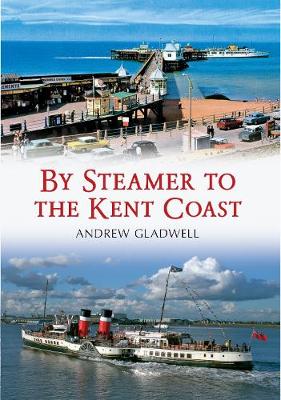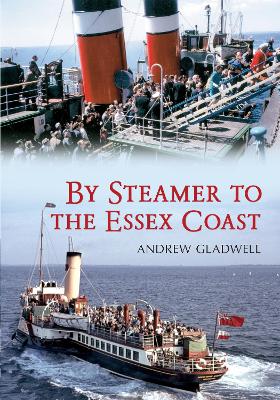By Steamer to the ...
3 total works
Since the dawn of steam navigation, people have taken pleasure cruises in Britain’s rivers and estuaries and along the coast. Andrew Gladwell takes us on a tour of the south coast of England, illustrating the story of the paddle and pleasure steamers from south Devon to Sussex. Southampton and Bournemouth were the homes of the Red Funnel fleet, and Weymouth housed the ships of Cosens. Interlopers such as the White Funnel ships of P&A Campbell also operated in the area, as did independents in Brighton and Hastings.
From the beauty of Lulworth Cove, where the paddlers would beach on the shallow sand to let passengers off, to the piers of Swanage, Poole, Bournemouth, the Isle of Wight, Southampton, Brighton, Eastbourne and Hastings, pleasure steamers were a common sight until the late 1960s, when Cosens finally closed and scrapped their ships, although the PS Waverley and the Balmoral still continue the tradition.
From the beauty of Lulworth Cove, where the paddlers would beach on the shallow sand to let passengers off, to the piers of Swanage, Poole, Bournemouth, the Isle of Wight, Southampton, Brighton, Eastbourne and Hastings, pleasure steamers were a common sight until the late 1960s, when Cosens finally closed and scrapped their ships, although the PS Waverley and the Balmoral still continue the tradition.
From the 1840s, with the development of steamships, there was a demand for day trips to the coast. Towns along the Thames and on the Essex and Kent coasts benefitted from the influx of trippers. Numerous companies, such as the Eagle and Belle steamers and the New Medway Steam Packet Co., catered for this tourist traffic. Towns such as Margate, Ramsgate, Herne Bay and Deal grew on the profits made from the excursionists. Andrew Gladwell follows up his By Steamer to the Essex Coast and looks at the resorts of Kent and the pleasure steamers that once sailed there. Steamers such as the Crested Eagle, Royal Daffodil, Medway Queen and, even today, the Waverley and Balmoral, were once a common sight at the piers and jetties of Kentish resorts. Looking at both the resorts themselves and the ships that plied there, Andrew Gladwell gives us a flavour of pleasure steamer day trips of a bygone era.
Cruises by pleasure steamer along the Essex coast have been a popular day out since the Victorian age, and are still going strong today despite a plunge in popularity in the 1960s and 1970s and several tragic fires. For most Londoners, the tradition of going to the seaside was always by pleasure steamer. These steamers, with their happy names, colourful liveries and luxurious interiors, became a memorable annual tradition. Steamers such as the Royal Daffodil, Royal Sovereign, Queen of the Channel and Royal Eagle became part of everyday life. For many, there was simply no other way to visit the seaside! And when they arrived at Southend or Clacton, the day was a great ritual where people visited their best-loved attraction, sat in their favourite gardens and topped their day off with fish and chips and a Rossi ice cream. Then they ran along the pier for the journey home to London. From the start of paddle steamer services in the 1820s, through their great heyday in the 1930s and the collapse in passenger numbers following the Second World War to the nostalgic service now provided by Balmoral and Waverley, Andrew Gladwell explores this simple pleasure which brought so much joy.


